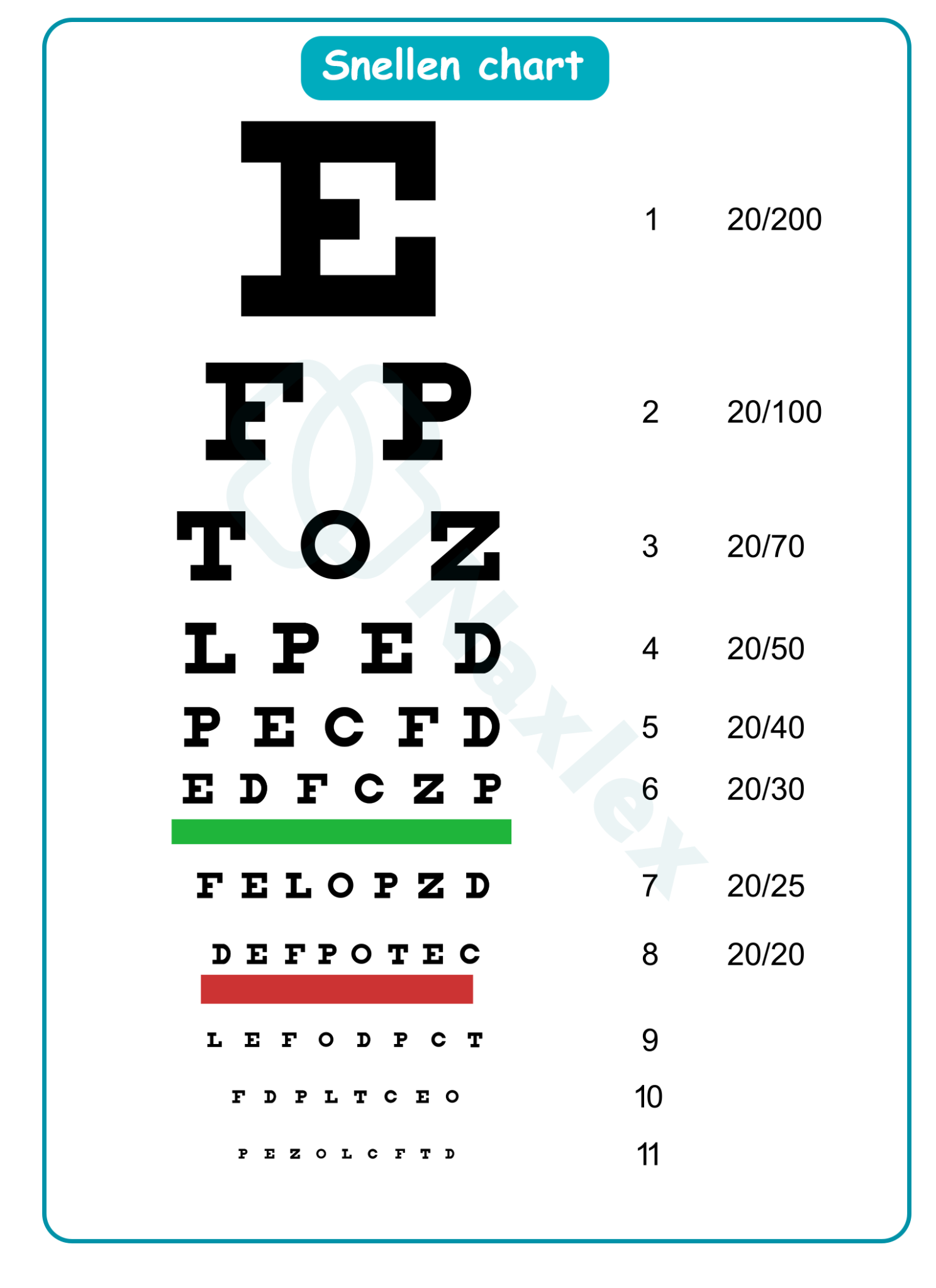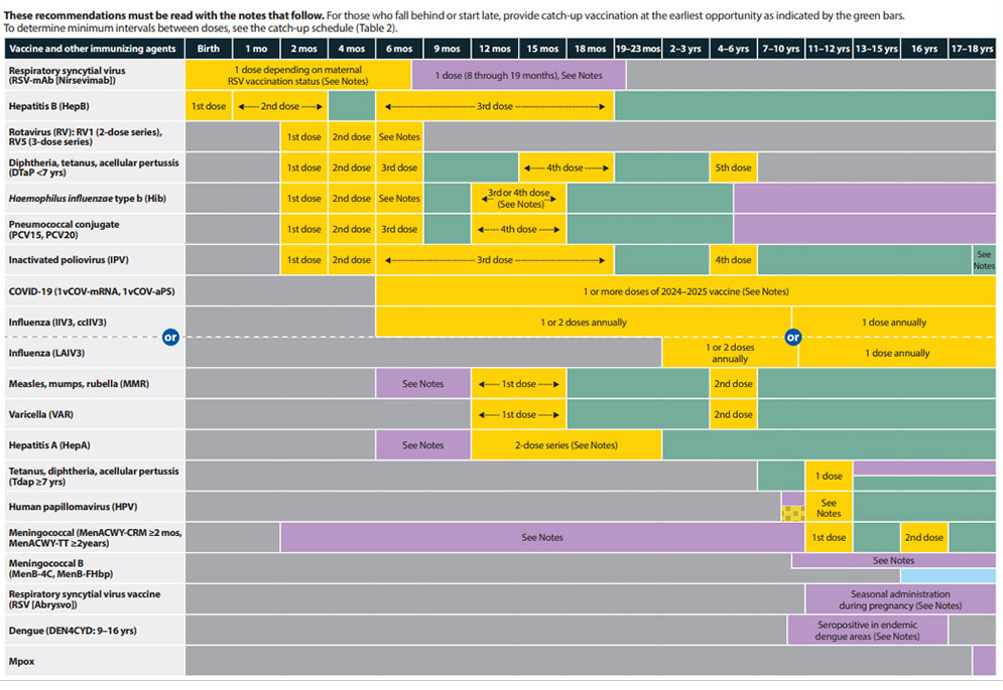Please set your exam date
Health Supervision In Children
Study Questions
Exams on Health Supervision In Children
Custom Exams
Login to Create a Quiz
Click here to loginLessons
 Naxlex
Just Now
Naxlex
Just Now
Notes Highlighting is available once you sign in. Login Here.
Objectives
- Describe the objectives of health supervision for children.
- Discuss the principles guiding health supervision, including the concept of a medical home.
- Identify the components of a comprehensive health supervision visit.
- Explain the importance of developmental surveillance and screening.
- Summarize key injury and disease prevention strategies, including common screening tests and the immunization schedule.
- Recognize the role of anticipatory guidance and health promotion in pediatric care.
- Understand special issues in health supervision, such as cultural influences and caring for children with chronic illnesses or those adopted internationally.
Introduction
- Health supervision, also known as well-child care, is a proactive, preventative approach to healthcare that focuses on the ongoing needs of children from birth through adolescence.
- Unlike sick visits, which address acute illnesses, well-child visits are designed to promote optimal physical, cognitive, and psychosocial development.
- These regular visits are a cornerstone of modern pediatrics, aiming to keep children healthy rather than just treating them when they are sick.
- The primary objective of health supervision is to ensure a child's optimal physical, mental, and developmental well-being. The main goals include:
- Preventing Illness and Injury: This is the most crucial goal. Well-child visits provide an opportunity to administer necessary immunizations and offer guidance on injury prevention (e.g., car seat safety, poison control).
- Monitoring Growth and Development: The healthcare provider tracks a child's growth using charts for weight, height, and head circumference. They also assess developmental milestones, such as language skills, motor skills, and cognitive abilities.
- Early Detection and Screening: These visits are essential for identifying health problems early, before they become serious. Screenings may include tests for hearing, vision, anemia, lead poisoning, and developmental disorders.
- Health Promotion and Education: Healthcare providers provide anticipatory guidance to parents and caregivers. This includes advice on nutrition, sleep habits, behavior, and what to expect as the child grows.
- Building a Relationship: Regular visits help establish a trusting relationship between the child, the family, and the healthcare provider. This creates a safe space for parents to ask questions and discuss concerns.
3.1. Wellness
- Health supervision is centered on the concept of wellness, which goes beyond the absence of disease. It emphasizes a holistic view of a child's health, encompassing physical, emotional, social, and mental well-being.
- This principle focuses on strengthening a child's health and protective factors, such as strong family bonds and positive peer relationships, rather than just treating problems after they arise.
3.2. Medical Home
A medical home is a model of care that is accessible, continuous, comprehensive, family-centered, coordinated, and compassionate. It's not a physical place but rather a partnership between a child's healthcare providers and their family.
Characteristics of a Medical Home:
- Accessible: Care is easy to reach geographically, financially, and culturally. Families can communicate with the care team by phone or email.
- Continuous: The same healthcare team cares for the child from infancy through adolescence, fostering a trusting relationship.
- Comprehensive: The team addresses all of a child’s health needs, including acute illness, preventative care, and chronic conditions.
- Family-Centered: The family is an equal partner in decision-making and care planning. The care team respects the family's cultural beliefs and values.
- Coordinated: The care team ensures seamless transitions between different specialists, schools, and community services.
- Compassionate: The team provides care with respect and empathy, recognizing the emotional and social impact of health issues.
Nursing Insight: As a nurse, you are often the central point of contact in the medical home. You can facilitate communication and coordinate care between specialists, schools, and other services to ensure a seamless experience for the family.
3.3. Partnerships
Effective health supervision is built on a strong partnership between the healthcare provider, the child, and the family. This relationship is collaborative, with the provider acting as a guide and educator, and the family as the primary advocate and decision-maker for the child. This partnership extends to other professionals, such as teachers, school nurses, and social workers, creating a network of support for the child.
3.4. Special Issues in Health Supervision
- Cultural Influences: A family’s cultural background significantly impacts their health beliefs, practices, and interactions with the healthcare system. Nurses must be culturally competent and respectful of diverse traditions, such as dietary habits, views on illness, and communication styles. For example, some cultures may rely more on traditional healers or herbal remedies, and it’s important to understand and integrate these beliefs into the care plan whenever possible and safe.
- Community Influences: The child’s community environment—including access to healthy foods, safe playgrounds, and quality schools—profoundly affects their health. Nurses should be aware of community resources and challenges to provide relevant guidance. A child living in a food desert, for instance, requires different nutritional guidance than one with easy access to fresh produce.
- Health Supervision and the Child with Chronic Illness: For children with chronic conditions like asthma or diabetes, health supervision visits are crucial. These visits not only focus on typical well-child components but also on managing the specific chronic illness, coordinating with specialists, and providing emotional support to the child and family. The goal is to optimize the child's quality of life and minimize the impact of the illness.
- Health Supervision and the Child Adopted Internationally: Children adopted from other countries often have unique health needs. They may have incomplete immunization records, be at risk for infectious diseases (like tuberculosis or hepatitis), have nutritional deficiencies, or have developmental delays due to early life trauma or poor living conditions. The initial health supervision visits must include comprehensive screenings and a review of all available medical records.
Nursing Insight: A detailed health history is crucial for children with special issues. This includes gathering information about their community, cultural background, and prior medical care.
Components of Health Supervision
Developmental Surveillance and Screening
- Developmental surveillance is an ongoing, flexible process of monitoring a child's development over time. It involves a mix of formal and informal observations, listening to parental concerns, and using standardized screening tools.
- Developmental screening is a more formal, standardized process using validated tools (e.g., ASQ-3, M-CHAT) to identify children at risk for developmental delays. Early identification is critical for timely intervention, which can significantly improve a child's long-term outcomes.
5.2. Injury and Disease Prevention
Screening Tests: These are used to detect potential health problems in children who appear healthy.
- Metabolic Screening: The newborn screen (done in the first few days of life) tests for a range of genetic, metabolic, and endocrine disorders like Phenylketonuria (PKU) and congenital hypothyroidism. Early detection prevents severe intellectual disability.
- Hearing Screening: All newborns are screened for hearing loss before hospital discharge. Early detection is crucial for language and speech development.
- Vision Screening: Starts in infancy with observing red reflexes and eye alignment. The Cardiff Visual Acuity Test for Matching or Estimation (CVTME) is a specialized test used to measure visual acuity in young children, particularly those between the ages of 1 to 3 years old. It is designed for a developmental stage where a child may not be able to name or point to letters or pictures on a standard eye chart. Formal screening with a Snellen chart begins around age 3 or 4 to detect conditions like amblyopia (lazy eye).

- Iron Deficiency Anemia: Screening typically begins between 9 and 12 months of age, and again in toddlerhood, based on risk factors. Untreated anemia can affect cognitive development.
- Lead Screening: Recommended for children at high risk, particularly those living in older homes. Lead exposure can cause irreversible neurological damage. Based on guidelines from the Centers for Disease Control and Prevention (CDC) and the American Academy of Pediatrics (AAP), all children should be screened for lead exposure at ages 1 and 2 years old. This recommendation is part of a universal screening strategy, as it's the age at which children are most likely to be exposed to lead, primarily through hand-to-mouth behaviors.
- Hypertension: Blood pressure screening begins at age 3.
- Hyperlipidemia: Universal screening for high cholesterol is recommended once between ages 9 and 11 and again between 17 and 21.
Immunizations: These are one of the most effective tools for disease prevention.
- ACIP Guidelines: The Advisory Committee on Immunization Practices (ACIP) provides evidence-based recommendations for the immunization schedule. Nurses must be familiar with the current schedule and proper administration techniques.
Recommended Child and Adolescent Immunization Schedule for Ages 18 Years or Younger, United States, 2025

- Barriers to Immunization: Common barriers include parental misinformation, fear of side effects, religious beliefs, lack of access to healthcare, and complex schedules.
- Overcoming Barriers: Nurses play a vital role in educating parents about vaccine safety and efficacy, addressing their concerns respectfully, providing a supportive environment, and referring families to community resources or public health clinics.
- Nursing Insight: Catch-up Schedule: If a child falls behind on this schedule, a "catch-up" schedule is available to ensure they receive all necessary immunizations. The Influenza (Flu) vaccine is recommended for all children aged 6 months and older every year. Other vaccines, such as Meningococcal B (MenB) and the COVID-19 vaccine, may also be recommended based on individual risk factors, lifestyle, or as a healthcare provider advises.
5.3. Health Promotion
Anticipatory Guidance: This is the process of providing practical information and advice to parents about what to expect in their child's development over the next period (e.g., safety measures for a newly crawling infant, preparing for potty training).
- Promoting Oral Health Care: Begins with advice on wiping a newborn's gums and progresses to encouraging proper brushing habits and regular dental visits. It also includes discussing the importance of fluoride and the dangers of bottle caries.
- Promoting Healthy Weight: Involves educating families on balanced nutrition, portion control, and the risks of obesity. It's a key topic at every visit, with a focus on healthy eating habits rather than dieting.
- Promoting Healthy Activity: Encouraging age-appropriate physical activity, limiting screen time, and fostering a love for movement are essential for physical and mental health.
- Promoting Personal Hygiene: Teaching children about hand washing, bathing, and proper toileting habits is crucial for preventing the spread of illness.
- Promoting Safe Sun Exposure: Educating families on the use of sunscreen, protective clothing, and avoiding peak sun hours to prevent skin cancer later in life.
Nursing Insight: Tailor anticipatory guidance to the child's age and the family's specific needs. Use "teachable moments" during the visit to provide relevant, practical advice.
Summary
- Health supervision is a crucial component of pediatric care, focusing on a proactive, preventative approach to ensure optimal child health and development.
- The principles guiding this care, wellness, the medical home, and partnerships, create a foundation for a holistic, family-centered model.
- Well-child visits are not just about immunizations; they involve essential components like developmental surveillance and screening, a variety of injury and disease prevention strategies, and health promotion through anticipatory guidance.
- Addressing special issues, such as cultural differences and chronic illnesses, ensures care is tailored to the individual child's needs.
- By embracing these principles and components, nurses and other healthcare providers play a critical role in supporting children and their families on their journey to a healthy future.
Naxlex
Videos
Login to View Video
Click here to loginTake Notes on Health Supervision In Children
This filled cannot be empty
Join Naxlex Nursing for nursing questions & guides! Sign Up Now


